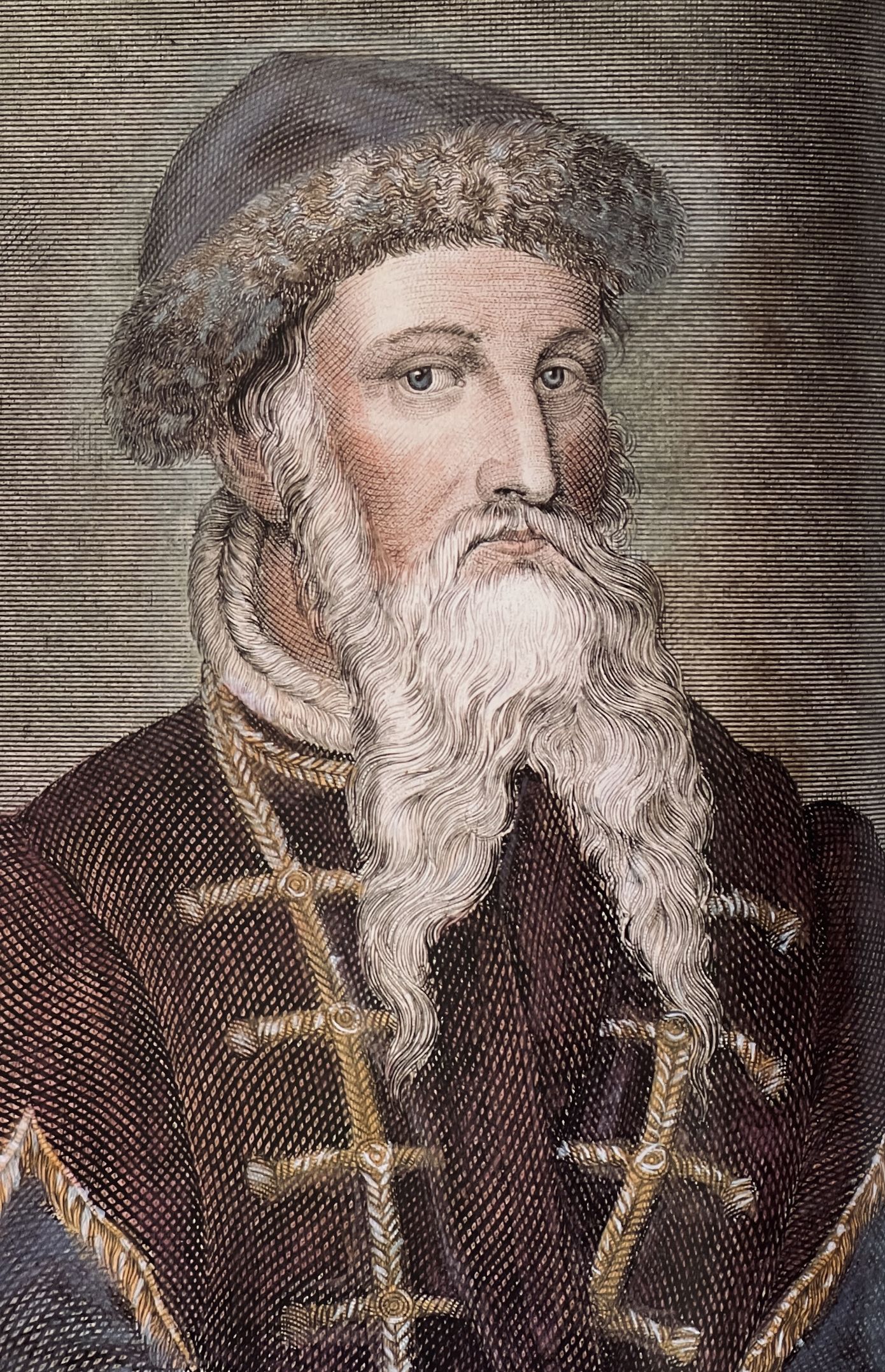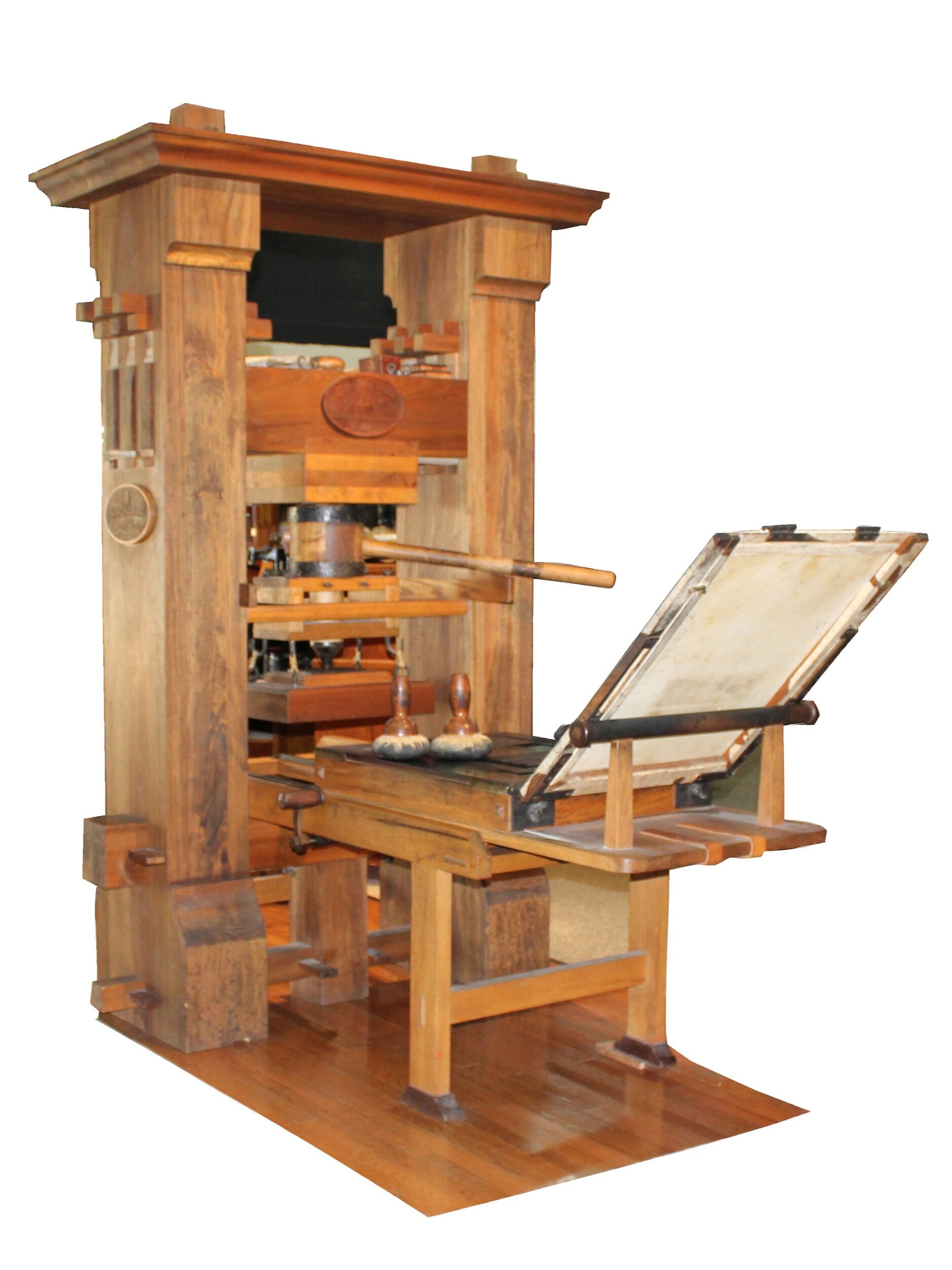From TF2 Smartphone Solutions – Where we believe understanding tech history makes us better at fixing today’s tech
Picture this: You’re scrolling through your smartphone, consuming information at lightning speed. News, tutorials, social media, research papers – all instantly accessible. Now imagine if every single piece of information you wanted had to be hand-copied by monks in dimly lit monasteries, taking months to produce a single book that would cost more than a modern car.
Welcome to pre-1440s Europe. And this is precisely why what happened next changed everything – not just for books, but for every piece of technology you’re using right now.
The Revolutionary Moment That Broke History in Half
When Johannes Gutenberg perfected his printing press around 1440, he didn’t just invent a new way to make books. The printing press was an important step towards the democratization of knowledge. Within 50 or 60 years of the invention of the printing press, the entire classical canon had been reprinted and widely promulgated throughout Europe. He unleashed something far more powerful: the first true mass communication revolution.
But here’s where it gets interesting for us tech people. Gutenberg wasn’t just a printer – he was a problem-solving innovator who faced challenges that would make any modern smartphone repair technician appreciate his ingenuity.
The Technical Nightmares Gutenberg Had to Solve
Before we dive into why this matters for today’s tech world, let’s appreciate the engineering brilliance. Gutenberg faced problems that would challenge any modern engineer:
The Ink Crisis: Regular writing ink wouldn’t stick to metal type. Gutenberg had to invent an entirely new oil-based ink that would adhere properly and dry without smudging – essentially becoming the first person to solve a “hardware-software compatibility issue.”
The Paper Problem: European paper wasn’t consistent enough for mass production. He had to work with papermakers to standardize quality – imagine trying to mass-produce smartphones when every screen was a different thickness!
The Pressure Puzzle: Too little pressure and the ink wouldn’t transfer. Too much and the paper would tear. Gutenberg adapted wine press technology, but had to completely reimagine the mechanics for precise, repeatable results.
The Typography Challenge: Every letter had to be identical in height but different in width, cast in perfect metal type that wouldn’t wear down after thousands of impressions. This was precision manufacturing centuries before the Industrial Revolution.
These weren’t just minor technical hurdles – they were revolutionary breakthroughs that parallel the kind of innovation we see in modern tech development.
Why This Matters More Than the Internet (Yes, Really)
Here’s where things get mind-blowing. The printing press allows us to share large amounts of information quickly and in huge numbers. In fact, the printing press is so significant that it has come to be known as one of the most important inventions of our time.
But it’s bigger than that. The printing press created the first information ecosystem – and every piece of technology we work with today is built on that foundation.
The Ripple Effects That Created Our Modern World
Standardization Revolution: Before printing, every handwritten book was different. The printing press forced standardization of spelling, grammar, and formatting. Sound familiar? It’s the same principle behind why all USB-C cables follow the same standard, or why programming languages have consistent syntax.
Quality Control: Printers had to develop systems to catch errors before mass distribution – the world’s first quality assurance protocols. Today, when we test a smartphone repair before returning it to a customer, we’re following principles established by 15th-century printers.
Knowledge Networks: The printing press invention is credited with contributing to the growth of literacy, education, and the availability of uniform information for the common person. This created the first global information network – a precursor to the internet itself.
Rapid Innovation Cycles: Ideas could now spread quickly across continents. Scientific discoveries in Italy could reach German engineers within months, not decades. This acceleration of knowledge transfer directly led to the Scientific Revolution, which gave us everything from electricity to the semiconductors in your smartphone.
The Direct Line from Gutenberg to Your Smartphone
At TF2 Smartphone Solutions, we work with cutting-edge technology every day – from the latest iPhones to gaming consoles. But every device we repair exists because of innovations that started with the printing press.
Circuit Board Manufacturing: The precision required to create identical movable type led to the development of precision manufacturing techniques that eventually enabled microprocessor production.
Mass Production: Henry Ford’s assembly line, which revolutionized manufacturing and made devices affordable, was directly inspired by printing press workflows.
Information Architecture: The way data is organized in your smartphone’s operating system follows principles of categorization and indexing that were first developed by early printers and publishers.
Error Correction: The debugging processes we use when diagnosing smartphone issues evolved from the proofreading and error-correction methods developed by printing houses.
The Failures That Made It Stronger
No revolutionary technology comes without spectacular failures, and Gutenberg’s journey was no exception. Understanding these setbacks reveals why the printing press was such a robust innovation:
The Business Model Disaster: Gutenberg’s first major project, the 42-line Bible, was a financial catastrophe. It took three years to print and cost so much that only the wealthy could afford it. But this “failure” forced rapid innovation in printing efficiency and cost reduction.
The Piracy Problem: As soon as books became profitable, unauthorized copying exploded. Printers had to develop the first intellectual property protections and distribution networks – problems that echo in today’s digital piracy challenges.
Technical Breakdowns: Early presses broke down constantly. Type wore out, mechanisms jammed, and quality varied wildly. These failures drove continuous improvement in engineering and materials science.
These challenges should sound familiar to anyone in tech. Every smartphone, every app, every piece of software goes through similar cycles of ambitious vision, initial failure, iterative improvement, and eventual transformation of society.
Why Every Tech Professional Should Care
It helped create a more uniform language and made the prices of books become considerably lower and more affordable for the masses. This process was the basis of further human advancement. But the printing press teaches us something crucial about technological disruption that applies directly to our work today.
Pattern Recognition: The printing press followed the same adoption curve we see with modern tech – initial skepticism, early adopter enthusiasm, mainstream adoption, and eventual ubiquity.
Network Effects: The more books that were printed, the more valuable literacy became. The more people who could read, the larger the market for books. This same network effect drives smartphone adoption, social media platforms, and app ecosystems.
Disruption Principles: The printing press didn’t just make books cheaper – it fundamentally changed who could access information, how quickly ideas spread, and what kinds of knowledge were considered valuable. Every successful tech company today follows this pattern of fundamental disruption rather than incremental improvement.
The Modern Parallel: Your Smartphone as a Printing Press
When you think about it, your smartphone is remarkably similar to Gutenberg’s printing press. Both are technologies that:
- Democratize Information: Anyone can now publish content instantly to a global audience
- Standardize Communication: Text messages, emails, and apps follow consistent formatting
- Enable Mass Distribution: A single social media post can reach millions instantly
- Require Complex Manufacturing: Precision engineering and quality control are essential
- Create Economic Ecosystems: App developers, content creators, and service providers all depend on the platform
At TF2 Smartphone Solutions, we specialize in repairing all types of tech, from smartphones to gaming consoles, handling everything from cracked screens and water damage to battery replacements and charging port repairs. When we fix your device, we’re maintaining a link in the information chain that started with Gutenberg’s first printed page.
The Printing Press Legacy in Every Repair
Every time we replace a smartphone screen or fix a charging port, we’re participating in a tradition of technological problem-solving that goes back nearly 600 years. The diagnostic methods we use, the precision required for component replacement, and the quality standards we maintain all trace their lineage to innovations that began in Gutenberg’s workshop.
The printing press taught humanity that complex technology could be reliable, scalable, and transformative. It established the principle that information technology should serve everyone, not just the elite. And it proved that sometimes the most important innovations are the ones that make existing capabilities dramatically more accessible.
Why This Changes Everything
The printing press revolutionized the world as we know it. But more than that, it established the template for every technological revolution that followed. Understanding this history makes us better at recognizing truly transformative technologies and understanding their potential impact.
When someone brings their broken smartphone to our Telford location, they’re not just getting a device repaired – they’re maintaining their connection to the greatest information revolution in human history. That broken screen or faulty battery isn’t just an inconvenience; it’s a barrier to participating in a global knowledge network that started with Gutenberg’s first printed Bible.
The printing press remains the single most important technological development in world history because it didn’t just change what we could do – it changed who we could become. It transformed humanity from a species limited by the speed of handwriting and the reach of voices into one capable of instant, global knowledge sharing.
And that transformation is still happening, every time we fix a device, every time someone connects to the internet, every time information flows freely from one mind to another.
In our workshop at TF2 Smartphone Solutions, we’re not just fixing phones – we’re maintaining the infrastructure of human knowledge. And that, perhaps, is the most important repair work of all.
Ready to keep your connection to the world’s greatest information network running smoothly? Visit TF2 Smartphone Solutions in Oakengates, Telford, where we understand that every device we repair is a gateway to centuries of human knowledge and innovation.










